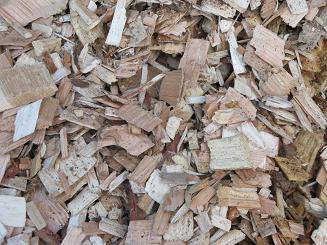In the case of urban wood waste, leaves and branches are collected and typically ground up with other waste wood. The ground up material can be used as mulch or converted to compost. In the case of harvesting commercial timber, …
Many organisms live on decaying wood, so if decaying wood is removed from the forest for energy production, will it negatively impact the native ecology?
Removing decaying wood from the forest disrupts the life cycle of decomposers (decay fungi, insects, bacteria, etc.), which in turn can disrupt the food source and habitat for other plants and animals. The degree of disruption to the native ecology …
What are the air emissions of burning wood?
When wood is burned, the combustion reaction produces heat and emissions in the form of water, organic vapors, gases, and particulates. The emissions of most concern are carbon monoxide (CO), carbon dioxide (CO2), sulfur oxides (SOx), and nitrogen oxides (NOx). …
Can wood grow fast enough to meet our energy needs?
Wood cannot meet all of our country’s energy needs—at most only about 10% nationally. However, it can help to meet our needs by providing a secure, renewable energy source. On a local level, wood can sustainably provide the energy to …
What are the reasons not to use wood for energy?
Communities should discuss a number of factors when considering whether using wood for energy is the right choice. While many factors may be location-specific, some factors to consider include the cost and sustainable supply of wood resources within a reasonable …
What is the difference between ethanol labeled E10 and E85?
Ethanol can be blended with gasoline in varying quantities to reduce the consumption of petroleum fuels, as well as to reduce air pollution. Most of today’s commercially available vehicles can run on blends of E10, a blend of 10 percent …
